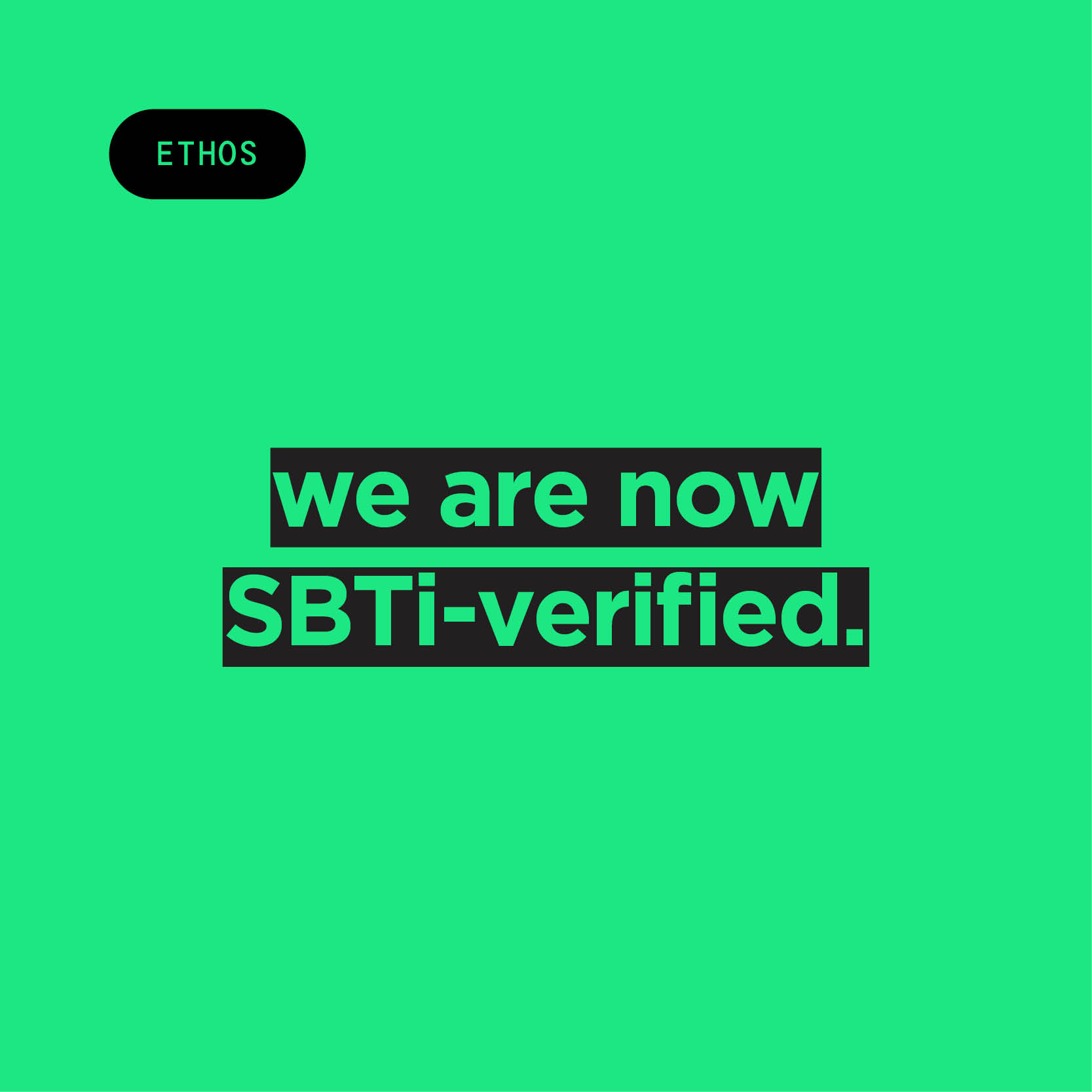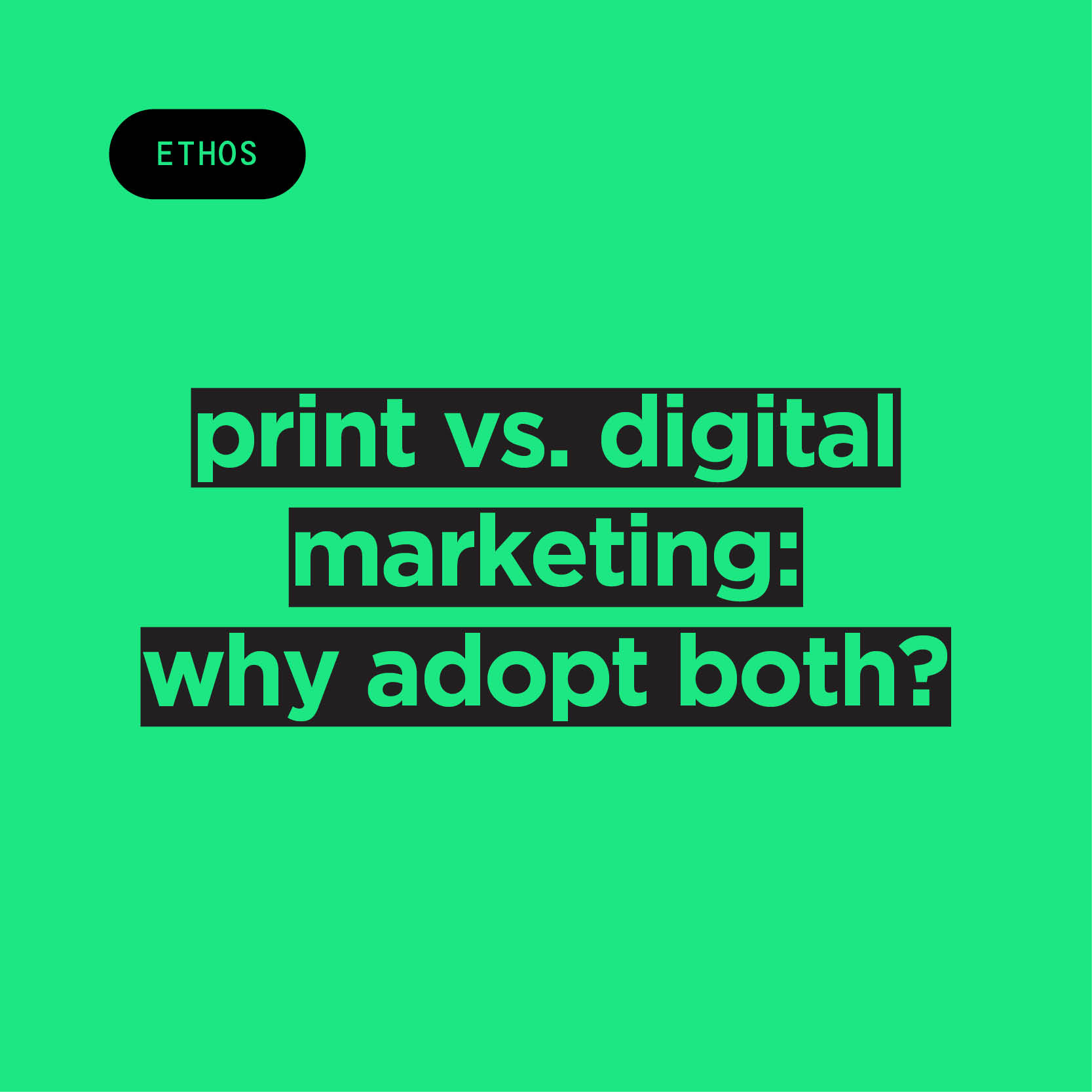
VOC-free inks: The colourful future of sustainable printing
At Jump, we are committed to making better choices for our planet, team, and customers. Our environmental and sustainability efforts give our clients the peace of mind of knowing they’re partnering with a creative agency that is genuinely devoted to giving back.
Print might get a bad rap for being environmentally damaging—the emissions, the chemicals, the trees cut down… At Jump, on the other hand, we take all the necessary steps (no matter how small) to ensure that all our products aren’t doing more harm than good. That’s what being a B Corp is all about!
One step we take towards truly environmentally friendly print is choosing the “greenest” inks. You might’ve heard us talk about our range of VOC-free inks and wonder why they matter so much. Well, here are all the answers!
What are VOCs?
First of all, what even are VOCs (Volatile Organic Compounds)? Simply put, they’re carbon compounds found in many items: chlorinated drinking water, household, cleaning, and cosmetic products, pesticides, paints, fuel, building materials, glue, markers, and, yes, even ink.
Why VOCs are a problem for both the planet and people
Petroleum-based inks, which gained popularity 50 years ago for being fast-drying and cost-effective, are the main culprits. As they dry, they release VOCs into the air. Plus, even more VOCs are emitted when the presses are cleaned between print cycles. Lastly, petroleum-based inks require stronger solvents, which leads to even higher VOC emissions.
Over time, and in high concentrations, VOCs can be dangerous for our health and the well-being of our planet. If they’re not properly managed, prolonged indoor exposure to VOCs can lead to short and long-term health problems, from skin irritation to organ damage. Outside, these carbon compounds easily evaporate at normal air temperatures and contribute to smog formation, one of the leading causes of global warming.
What are VOC-free inks?
It goes without saying that, because of our guiding ethos, we would want to avoid VOCs at all costs. That’s why we’re dedicated to only using VOC-free inks for our print jobs! These inks don’t contain oil-based pigments, and compared to petroleum-based inks, they emit far fewer VOCs.
Ingredients that make VOC-free inks different
What makes VOC-free inks different is their ingredients. The organic compounds used in them are usually recyclable, and break down faster than their oil-based counterparts.
Common types of VOC-free inks include water-based (where water substitutes for the organic solvent), vegetable-based (made from renewable resources like soy or canola oil), algae-based (carbon-negative, renewable, and biodegradable), and UV-curable inks (which use UV light to eliminate the need for solvents).
How VOC-free inks help the environment
The advantages of VOC-free inks are plenty, both for the environment and the people.
When we talk about caring for our planet, using VOC-free inks is a great step. These inks help cut down smog creation and protect the ozone layer. They also lower the production of hazardous waste—one of the main environmental issues faced by the print industry.
Last but not least, the use of VOC-free inks also helps improve the indoor air quality of print shops and printing presses.
Are VOC-free inks better for print shops, too?
Better indoor air quality means better working conditions for employees. Thanks to VOC-free inks, the staff of your local print shop can benefit of safer, fresher air at their workplace, which seriously lowers health risks.
From a marketing standpoint, VOC-free inks benefit printing presses by allowing them to market themselves as eco-friendly—something that today’s consumers (whether private citizens or corporations) pay close attention to.
VOCs in different printing methods
Much like inks, not all printing methods are created equal: different printing methods produce different amounts of VOC emissions. Let’s take a look at the most common methods and their associated emissions.
Litho printing and VOC emissions
Traditional litho (offset) printing often uses solvent-based inks with higher VOC content. These inks require petroleum-derived solvents that evaporate during the drying process. Plus, cleaning solutions for litho presses can add even more VOCs to the mix. This makes litho printing a significant source of VOC emissions. With that being said, there are plenty of control measures that printers can put in place to reduce them.
Digital printing (toner-based) and VOC emissions
Toner-based digital presses (like laser printers), on the other hand, actually emit very little VOCs. This is because the toner used is a dry powder that’s fused to paper using heat. No drying solvents, no evaporation. It’s a great low-VOC option for short runs.
Hybrid digital printing (like HP Indigo) and VOCs emissions
Lastly, HP Indigo and other liquid-toner-based systems sit somewhere in the middle. They use liquid “inks” that contain some solvents, meaning VOC emissions are higher than toner printing but still lower than traditional litho.
Why every print shop should care about VOC-free inks
Helping your business go greener without compromising quality
The question of which VOC-free ink is the best is a hotly debated topic in the print industry. Algae-based inks are often touted as the most environmentally friendly due to their carbon-neutral properties. Studies have also shown that linseed-soybean oil-based ink performs better than petroleum-based ink, providing a higher brightness value. At Jump, we always opt for soy-based inks because they are derived from a renewable source (soybean oil), create vibrant, high-quality images, and are easily removable from paper during recycling, a process called “deinking”.
Recap: The key benefits of VOC-free inks vs. traditional inks
So, to sum up, what are the key benefits of VOC-free inks compared to traditional ones? There are three main perks:
1. Better air quality and safer workspaces
VOC-free inks improve air quality both indoors and outdoors, making printing presses a safer workplace for print staff.
2. Lower environmental impact
VOCs contribute to the formation of smog, which in turn impacts the health of our atmosphere. VOC-free inks eliminate (or significantly reduce) this issue.
3. Meeting sustainability goals (and winning over clients!)
In today’s landscape, sustainability has become a priority for everyone—businesses and clients alike. By using VOC-free inks instead of traditional ones, a printing press can begin its journey towards sustainable practices, and also win clients over with an environmentally friendly marketing angle.
FAQs about VOC-free inks
1. Do VOC-free inks affect print quality?
Not at all! They deliver the same color vibrancy and durability as regular inks.
2. Are VOC-free inks more expensive?
Sometimes, but prices are becoming more competitive as demand grows.
3. Can VOC-free inks be used on any printing press?
Many presses can use VOC free inks, especially with slight adjustments.
4. Are toner-based digital prints always VOC free?
Mostly! Toner-based printing emits negligible VOCs since toner is dry.
5. Is HP Indigo printing better than litho for VOC emissions?
Yes—Indigo emits fewer VOCs than litho but slightly more than toner-based presses.
6. Why should my clients care about VOC free inks?
Because sustainability matters! Clients love knowing their printed materials are eco-friendly.


